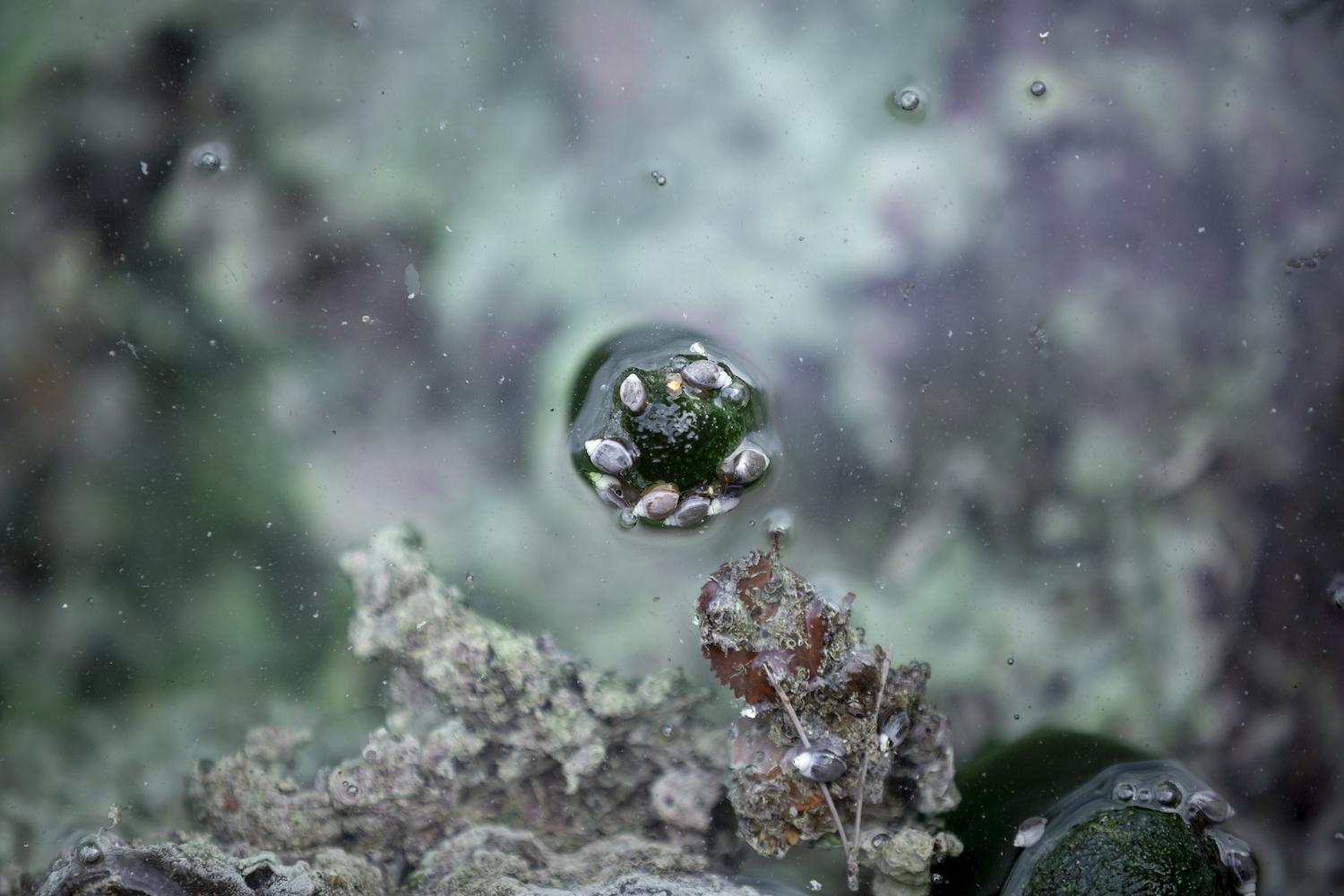
The Banff Springs Snail only lives in a small part of Cave and Basin National Historic Site at Banff National Park/Parks Canada
Crouched over a thermal pool, I can see dozens of warm water creatures the size of apple seeds quietly living their best lives on floating mats made up of bacteria, algae, woody debris and leaves. The sulphur-rich water smells like rotten eggs and wants to be turquoise but it’s dominated by globs of green, brown and white scum. You probably wouldn’t notice the tiny brown aquatic snails unless someone told you what to look for.
Hello beautiful Physella johnsoni. There are only a few thousand of these Banff Springs Snails in the world and all of them live here in Alberta in Banff National Park.
In 2000, this air-breathing snail made history when the Committee on the Status of Endangered Wildlife in Canada (COSEWIC) upgraded it from threatened to endangered and it became the first living mollusc (snails and clams) to be classified by the independent advisory panel to the Minister of Environment and Climate Change. Now protected under the Species at Risk Act, the snail is the most at-risk wildlife species here in a park that’s known for its charismatic grizzly bears and woodland caribou.
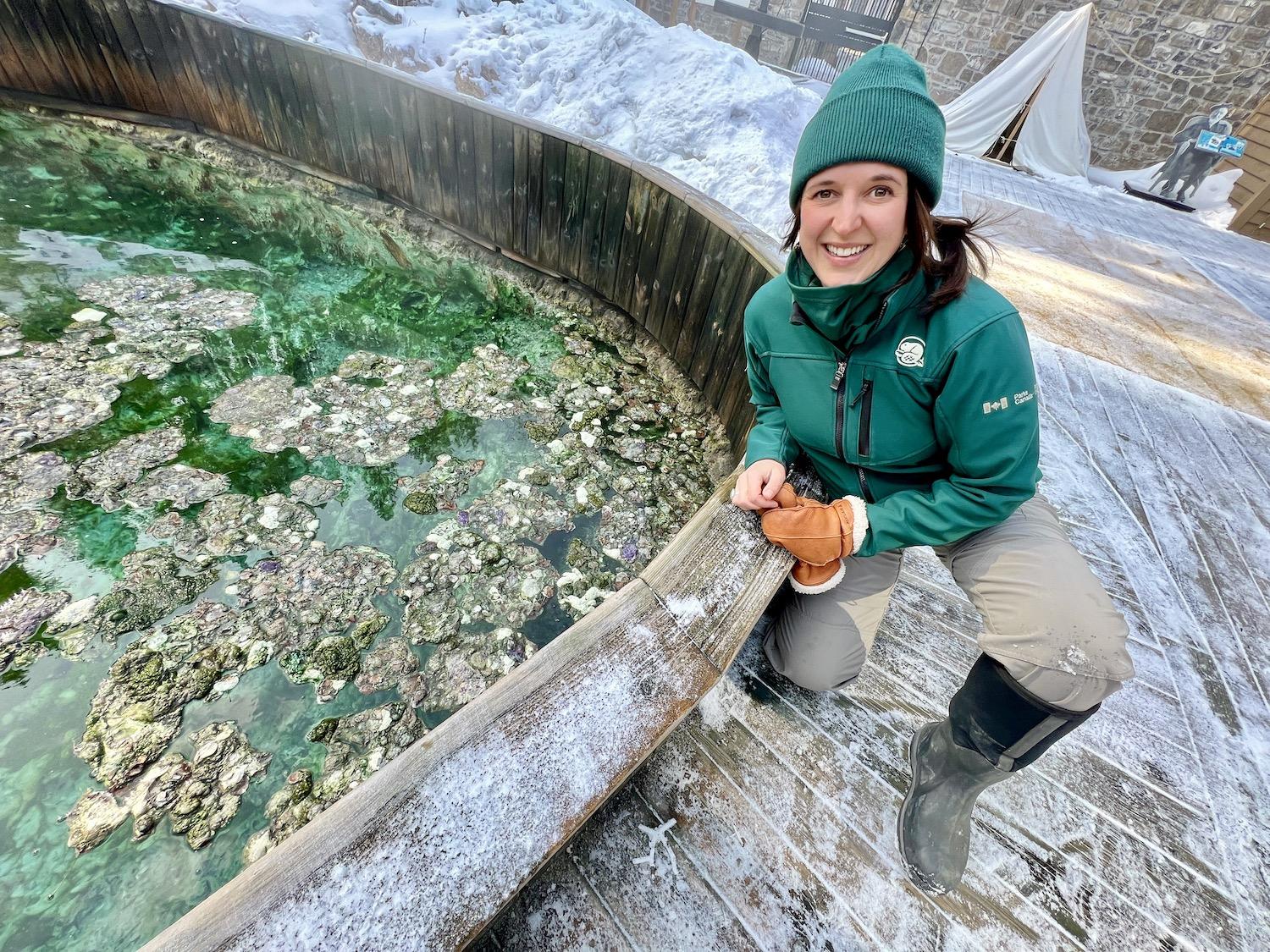
Kate Keenan, a resource conservation officer with Parks Canada, is shown at "the Basin" at Cave and Basin National Historic Site in Banff National Park. It's home to endangered Banff Springs Snails/Jennifer Bain
“Because they only exist here, if we lose them, they’re gone forever and that’s properly extinct,” Kate Keenan, a resource conservation officer with aquatic resources for the Banff Field Unit, tells me. “They’re essential to this ecosystem. The thermal springs are like this unique, little, rare habitat and the snails do actually have a big impact here. They’re grazers and so they feed on the microbial community and they break down nutrients and so that helps prevent the thermal springs from getting algae and bacteria blooms.”
We’re standing over a small pool of water that’s known as “the Basin” in Cave and Basin National Historic Site.
For thousands of years, Indigenous Peoples came to a small cave here on Sulphur Mountain filled with hot water believed to have healing properties. Then in 1883, three men who were building a railway across Canada saw steam coming from the ground, climbed down into the cave and set off a chain of events that launched Canada’s national park system.
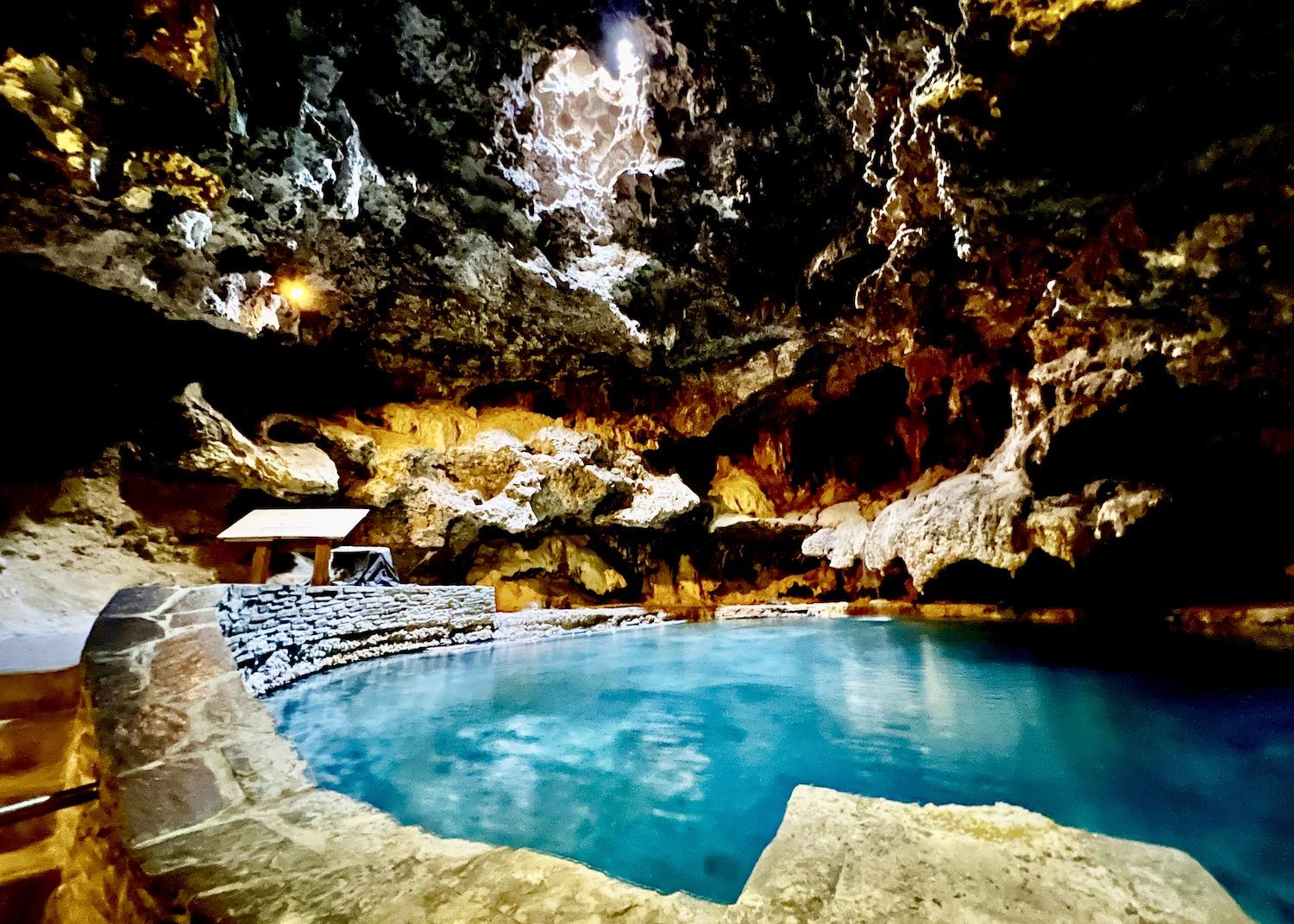
The cave with thermal waters that launched Canada's national park system is home to the endangered Banff Springs Snail and protected as Cave and Basin National Historic Site/Jennifer Bain
The short of it is that in 1885 the federal government stepped in to preserve the thermal springs and the land around it. They built an access tunnel to the cave (so people didn't have to climb down through a steam vent), bathing pavilion and public pool, and turned this mountain spot into Banff’s first official tourist attraction. The name changed a few times, and land was added, and now Banff draws more than four million visitors a year.
It wasn’t until 1926 that the snails were formally discovered. And it wasn’t until 1996 that the park got around to studying them and doing an environmental assessment. Now what was once the largest pool in Canada is covered by a brick floor and those who want to soak are sent to the Banff Upper Hot Springs. The goal is to stop people from doing anything that might crush the snails and their eggs or disturb their habitat.
“Please do not dip your hand in or swim in the Cave waters. Remain on the concrete footpath within the Cave,” a sign warns. “Why? Unique cultural features and endangered Banff Springs Snails are present in this Cave. It is illegal to disturb in any manner the unique cultural and ecological features protected within the Cave.”
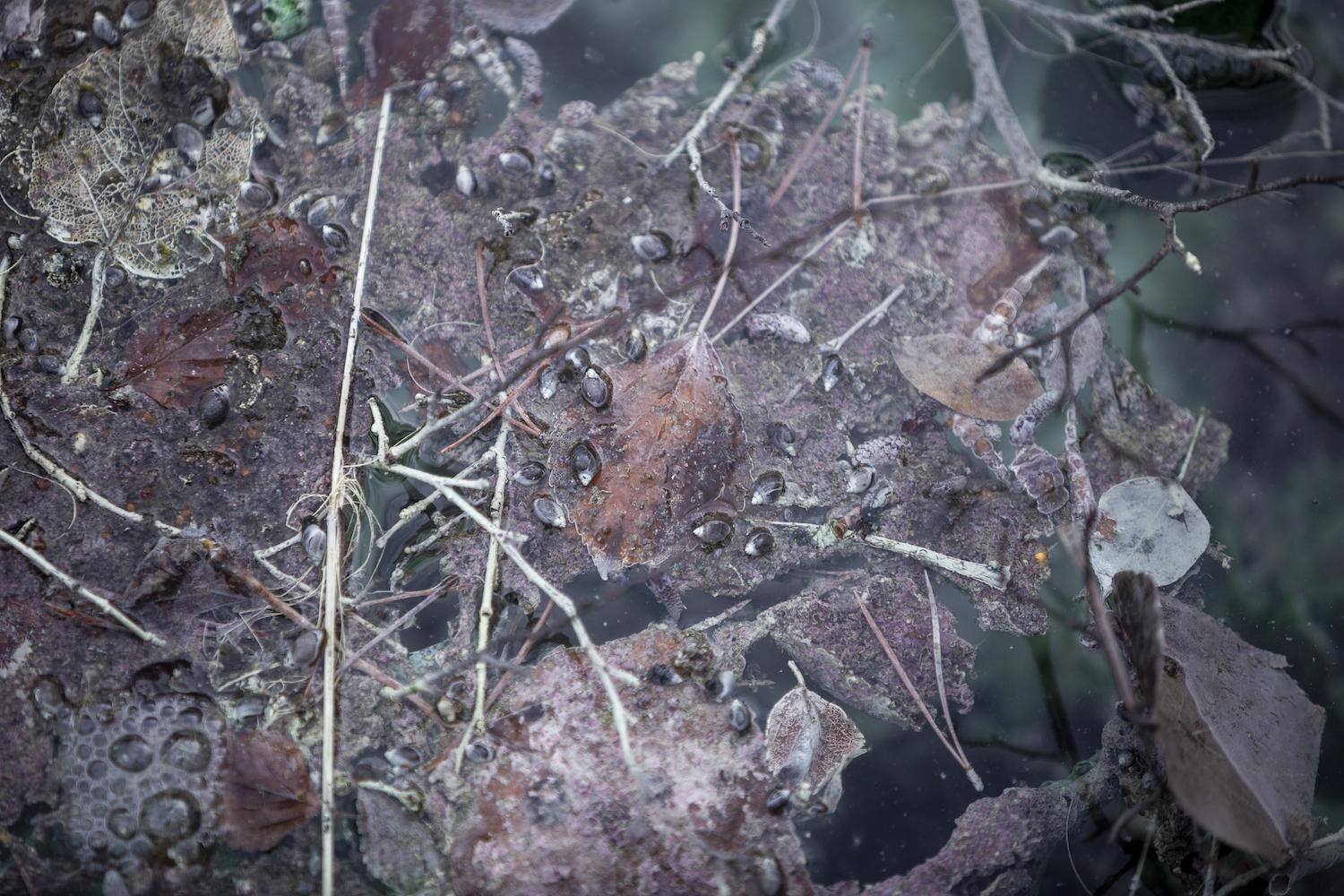
The endangered Banff Springs Snail is aquatic and clings to floating mats of algae, bacteria, woody debris and leaves/Parks Canada
People who disobey can be charged under the Canada National Parks Act and the Species at Risk Act, and face fines of up to $50,000 ($37,000 USD) and up to a year in jail, or both. “People want to touch the thermal spring water,” explains Keenan. “It’s just out of curiosity. It’s part of experiencing the hot spring, but unfortunately in the critical snail habitat that can just be detrimental to the populations here. So no limb dipping, no bathing, no swimming of any sort here."
There were four infractions in 2022 and those people all got off with warnings. But this was once the site of staff and local parties. In 1999, 10 people scaled a fence to skinny dip. In 2013, two Parks Canada employees were caught skinny dipping as a romantic night out, and in 2014 a man swam with the snails while smoking a cigar. He plead guilty and testified that God made him do it.
The problem is that the fragile snails and their eggs can be crushed by swimmers, and the thermal waters can be damaged by the lotions perfume and deodorant that people wear. There’s now a 24/7 surveillance system in place. Parks Canada uses area closures, restricted activities orders, public education and enforcement to protect the snails. Staff use interpretive signage, guided tours, social media posts and web content to raise the profile of the unsung creature. Part of Keenan's job is to help dispatch and law enforcement with surveillance, mainly in the restricted areas.
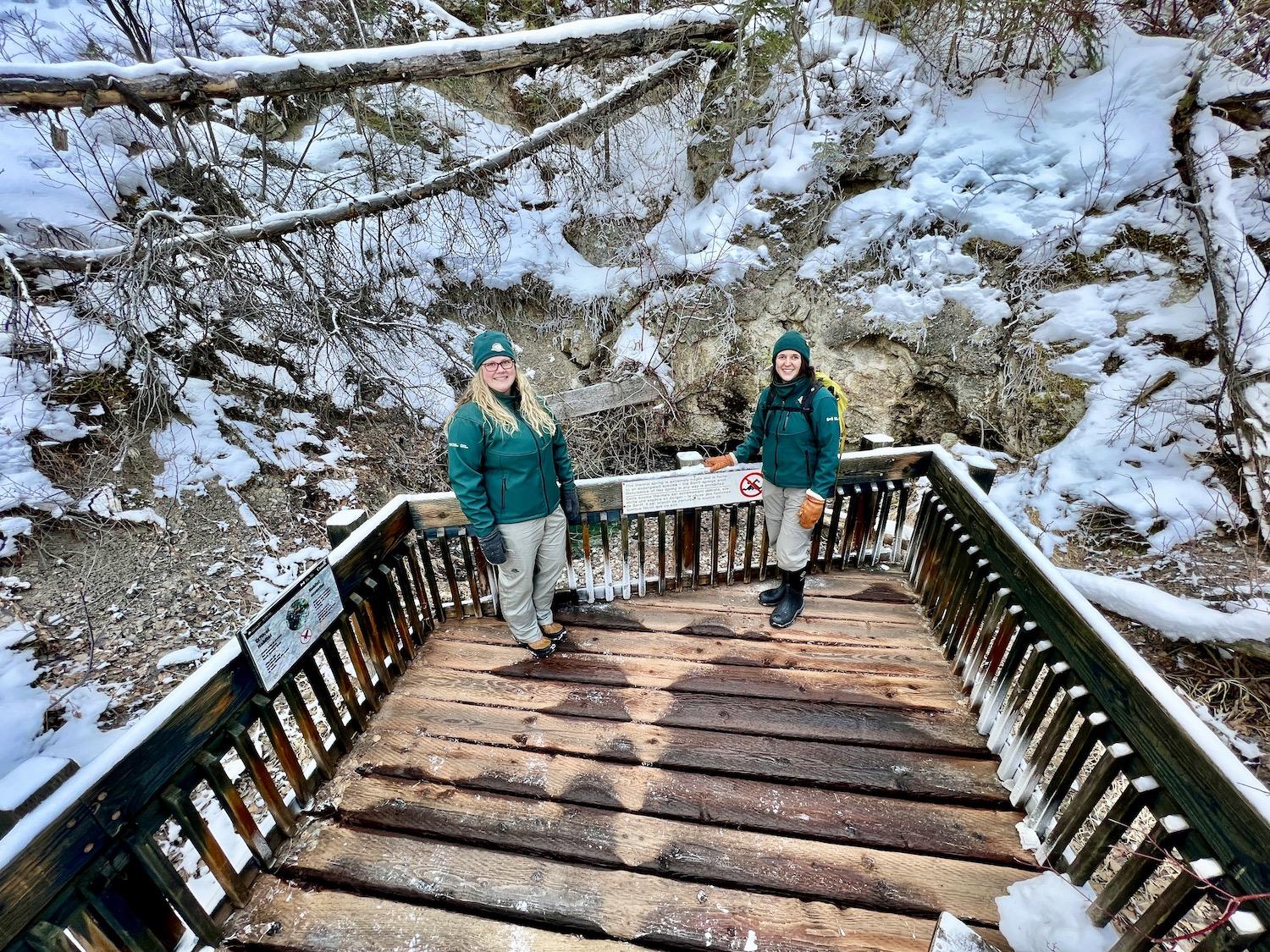
Aquatic snails live in four thermal pools at Cave and Basin National Historic Site. Kira Tryon, left, a public relations and communications officer for Banff National Park, and Kate Keenan, right, a resource conservation officer, stand by one of them/Jennifer Bain
There were originally snails in 11 separate thermal pools. By 1996, the species was only found living in five thermal springs, four of which were in this high visitor-use area in Cave and Basin. Two extirpated subpopulations have been reintroduced. Now the snails live in pools at Cave and Basin’s cave, basin, upper area and lower area. Outside the national historic site, but still in the park, they live in thermal pools at three restricted areas — Upper Middle Springs, Lower Middle Springs and Kidney.
"If the seven sites are combined," a COSEWIC executive summary says, "all the snails live in a space similar in size to the area from the blue-line to the nearest end boards on a North American ice hockey rink."
It’s tough to get a precise population count because snail numbers fluctuate so much within the year as well as between years, rising during the fall and dropping during the late winter and early spring. But the current population is roughly 3,500 in the cave and basin springs — as of 2020 — and considered stable and self-sustaining. COSEWIC, looking at the entire snail population, has seen numbers dip as low as 30 and risen as high as 34,000.
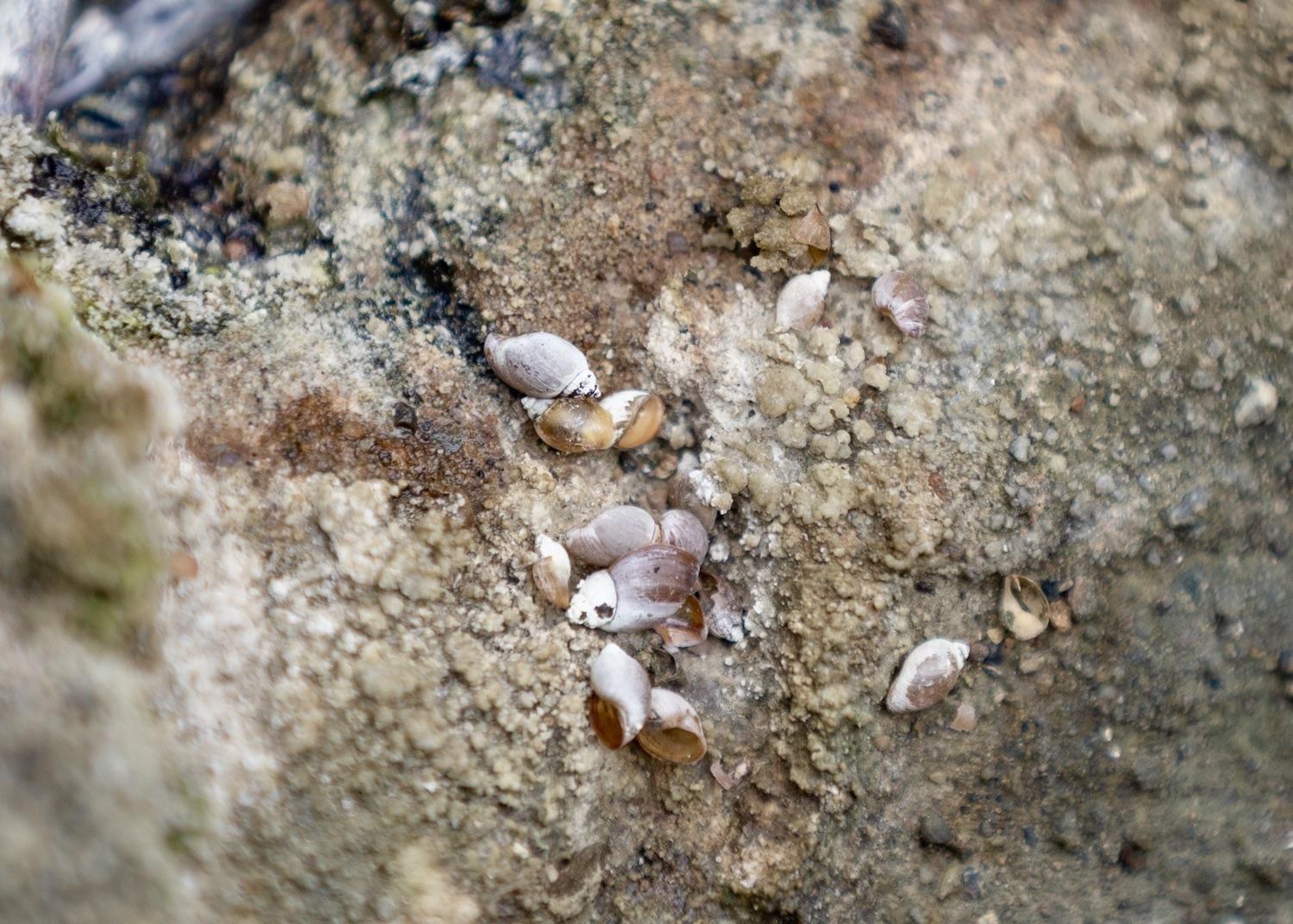
Endangered Banff Springs Snails are a small, globe-shaped aquatic snail with a shell length of up to 11 millimetres (0.4 inches) that coils to the left/Parks Canada
“The snails are hermaphroditic and so they can reproduce with themselves,” Keenan points out. “They are highly specialized to survive in the harsh environmental conditions of the hot springs, so that’s really high-water temperatures, low PH, very acidic water, low dissolved oxygen, and a high amount of sulphite — and so that’s what gives the thermal springs that characteristic egg smell."
The globe-shaped snails have a shell length of up to 11 millimetres (0.4 inches) and love to float on the surface of the water, but still need air to breath. Experts suspect the species evolved within the past 3,200 to 5,300 years.
“I have a special spot for the little guy and I do really like them," admits Keenan, who studied zooplankton for her master’s degree. "You have to be a very hardy species to survive here. It’s so harsh and they just love it, and so I really appreciate that about them.”
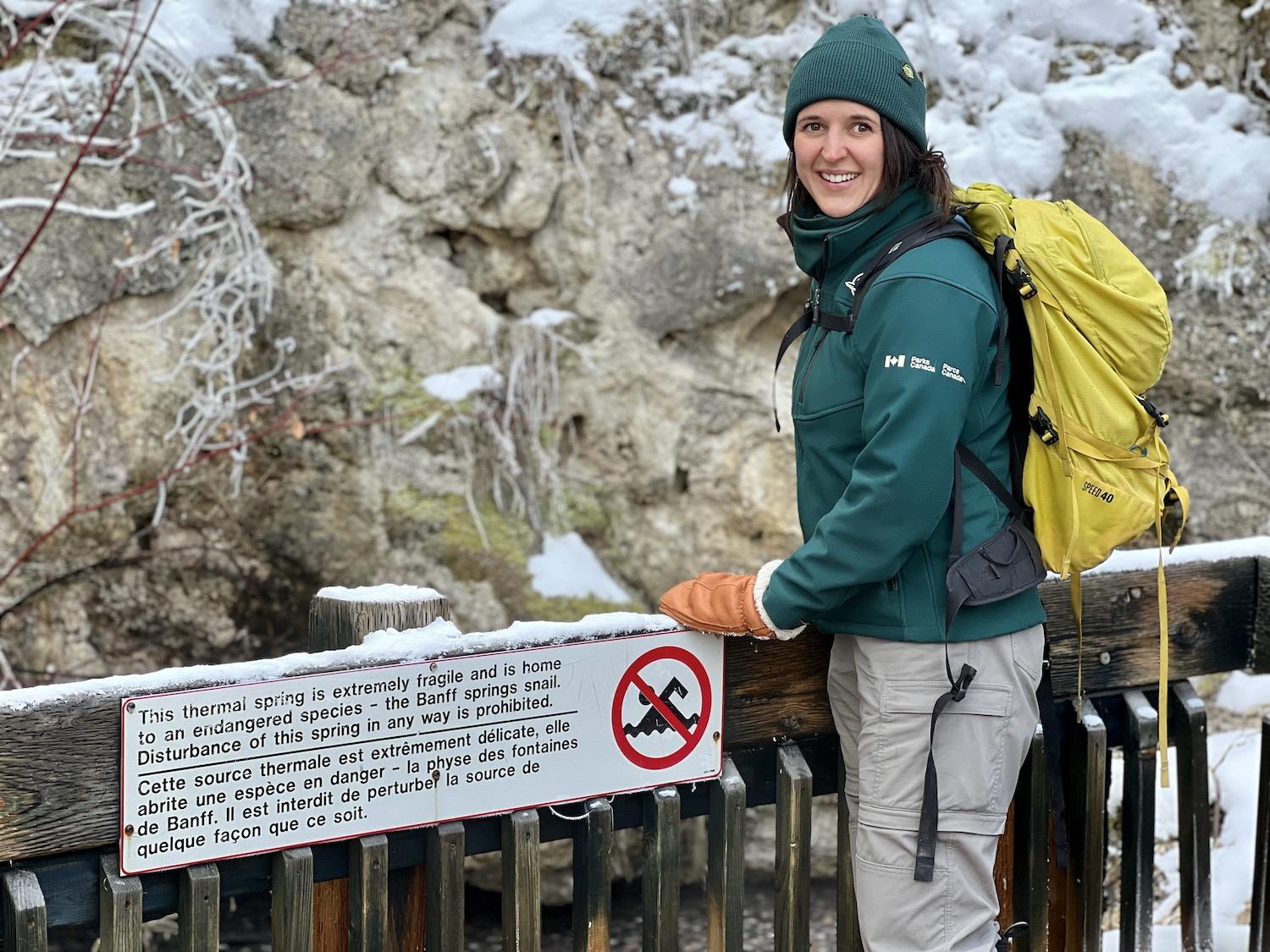
Resource conservation officer Kate Keenan stands by a warning sign that protects endangered Banff Springs Snails in Cave and Basin National Historic Site/Jennifer Bain
As we explore the site on a snowy day in March, I learn that the snails that live in different pools are genetically different from each other, which makes sense since they can’t go far to reproduce. Their primary habitat is right where water comes bubbling out of the rock and then within those first five metres (16 feet) where the water stays warm.
“They’re an indicator species for the thermal springs and so by monitoring them and protecting them, you’re protecting a lot of other species as well,” Keenan says. That includes two damselflies, 28 kinds of rare moss, eight plants and six liverworts.
The snails aren’t a primary food source for birds and amphibians, but do become important in winter when the rest of the landscape is covered in snow and the thermal springs are still lush and green. Researchers from outside the park do annual snail counts and monitor thermal flows.
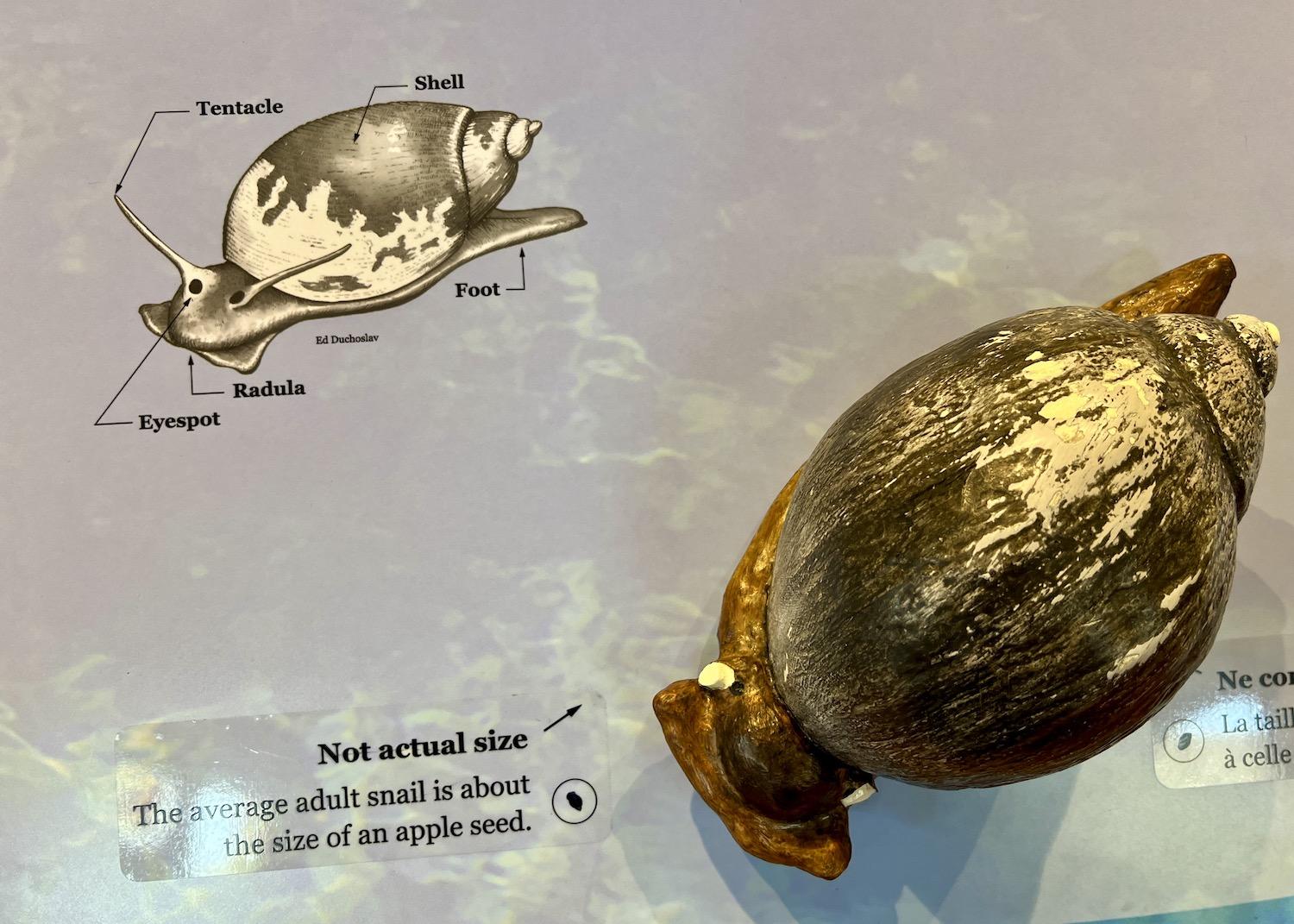
Intepretive displays at Cave and Basin National Historic Site showcase the endangered Banff Springs Snail/Jennifer Bain
“The research that’s been done — the ongoing monitoring, the surveillance — everything is working really well,” says Keenan. “We just want to continue this going forward.”
Other than me, not many people come to the Cave and Basin specifically to see the snails. “They’re an added bonus,” Keenan allows. “They are small because the ecosystem is small. But they’re still just as important for this ecosystem as large carnivores are on a modern landscape scale."
I love how the Parks Canada “Xplorers” activity guide for the site encourages kids to play “snail detective” and learn about both the creatures and the blue-green algae (one of the oldest organisms on the planet) that they eat. There’s no plush snail (yet?) in the gift shop, but there is a water globe featuring two adorable snails swimming in neon green water. There’s also an educational postcard full of fun facts about the snails and their hot springs habitat.
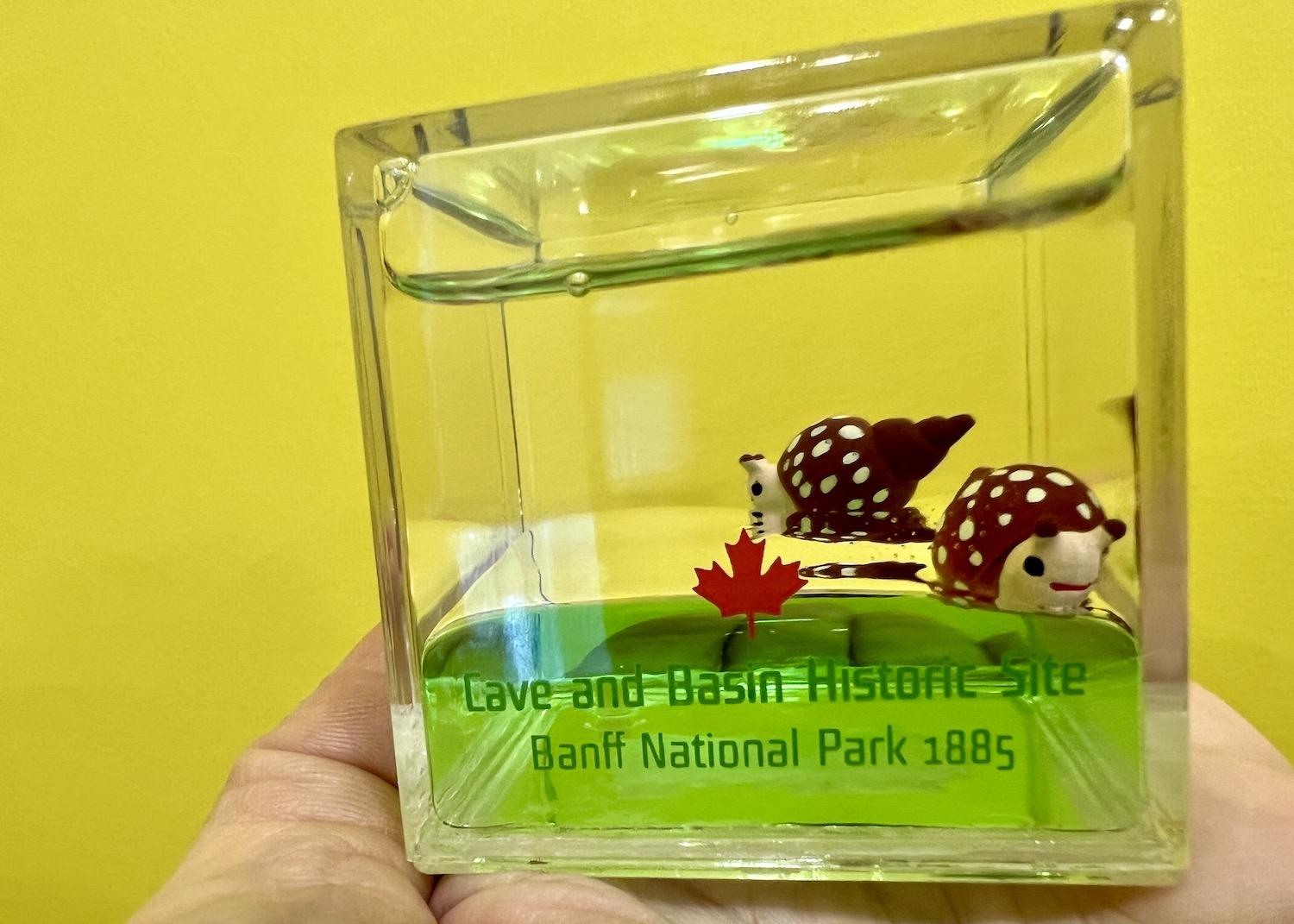
The gift shop at Cave and Basin National Historic Site sells this water globe with two endangered Banff Springs Snails/Jennifer Bain
I’m left-handed and so am pleased to read that these are among the 10 per cent of snail species that have shells coiling to the left. They eat decomposing organic material in the water like algae and leaves. They’re well-adapted to inhospitable environments, live in low-oxygen habitat and are exposed to hydrogen sulfide gases that are toxic to other species. They're happiest in 38C to 40C (100.4F to 104F) waters.
I learn how the thermal waters are heated by a geothermic effect deep underground, and how they flow faster in the summer and spring, but are much warmer in the winter. The rotten egg smell comes from hydrogen sulfide gases expelled by bacteria living in the water.
After meeting with Keenan, I join a guided tour of Cave and Basin with head supervisor Amar Athwal for a bigger picture about the site. He mentions the snails several times.
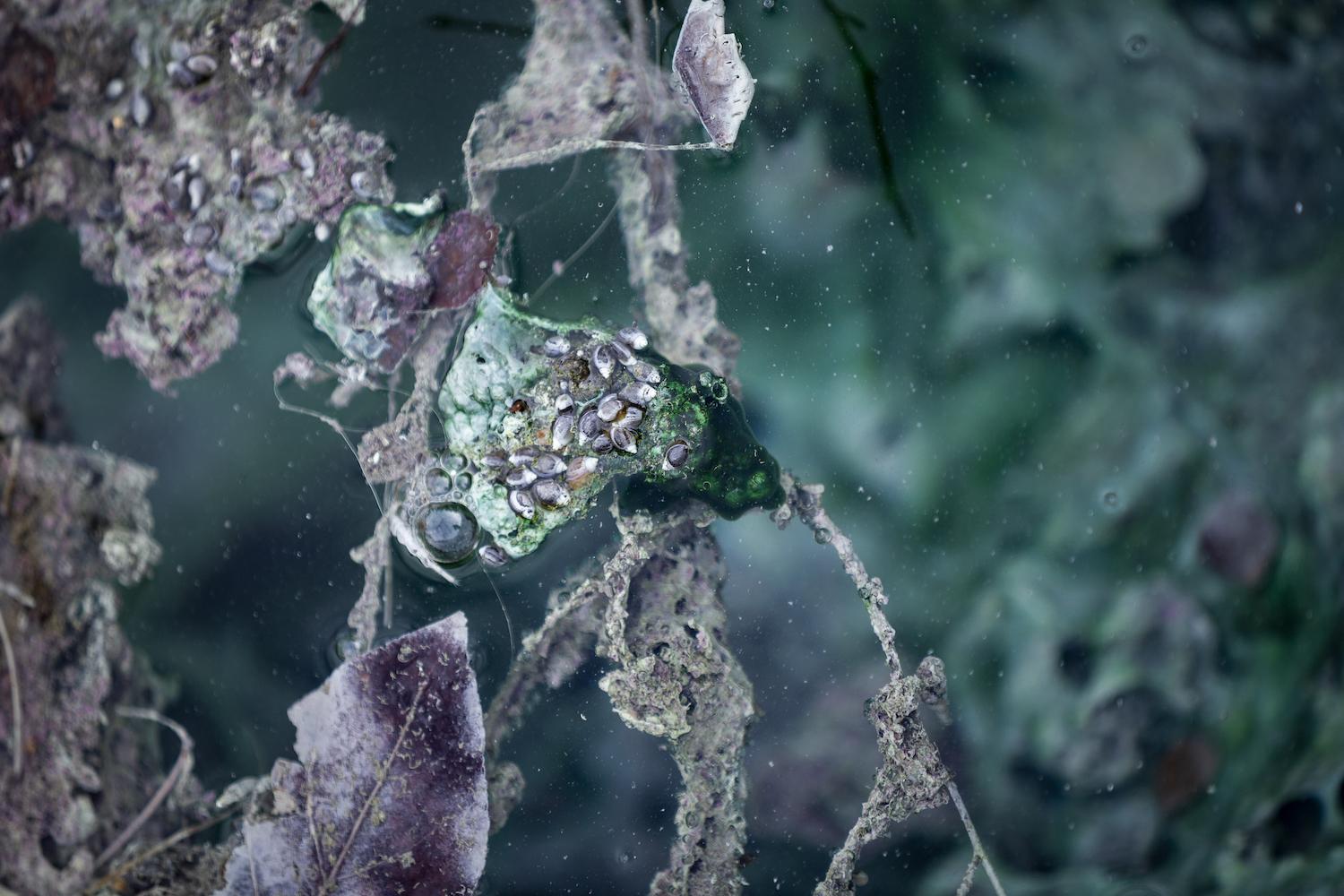
Unlike grizzly bears, Banff Springs Snails are hard to make out unless you know to look closely in just a few thermal pools/Parks Canada
“We look after the snails, the big guys and everything in between,” Athwal, an accomplished wildlife photographer, tells our group while showing off bear photos. “I like to take pictures of the snails in the fall when the beautiful fall color leaves fall in the Basin. They really stand out.”
He shares the story of how, a couple of months ago, mallard ducks landed in the Basin and chomped away on the snails before staff could shoo them away.
There's a TV screen set up by the Basin playing a short loop of macro footage by Calgary video artist Noel Begin of snails floating in the water (upside down because of their heavy shells). The video, Athwal explains, “gives an opportunity for people to get a closer look because literally you’d need binoculars.”
Still, we gamely peer into the Basin looking for the tiny creatures just as I did with Keenan. We ooh and aah as Athwal talks about how slowly they move, how they float on those algae and bacteria microbial mats, and how they create a bubble around themelves when they go in the water.
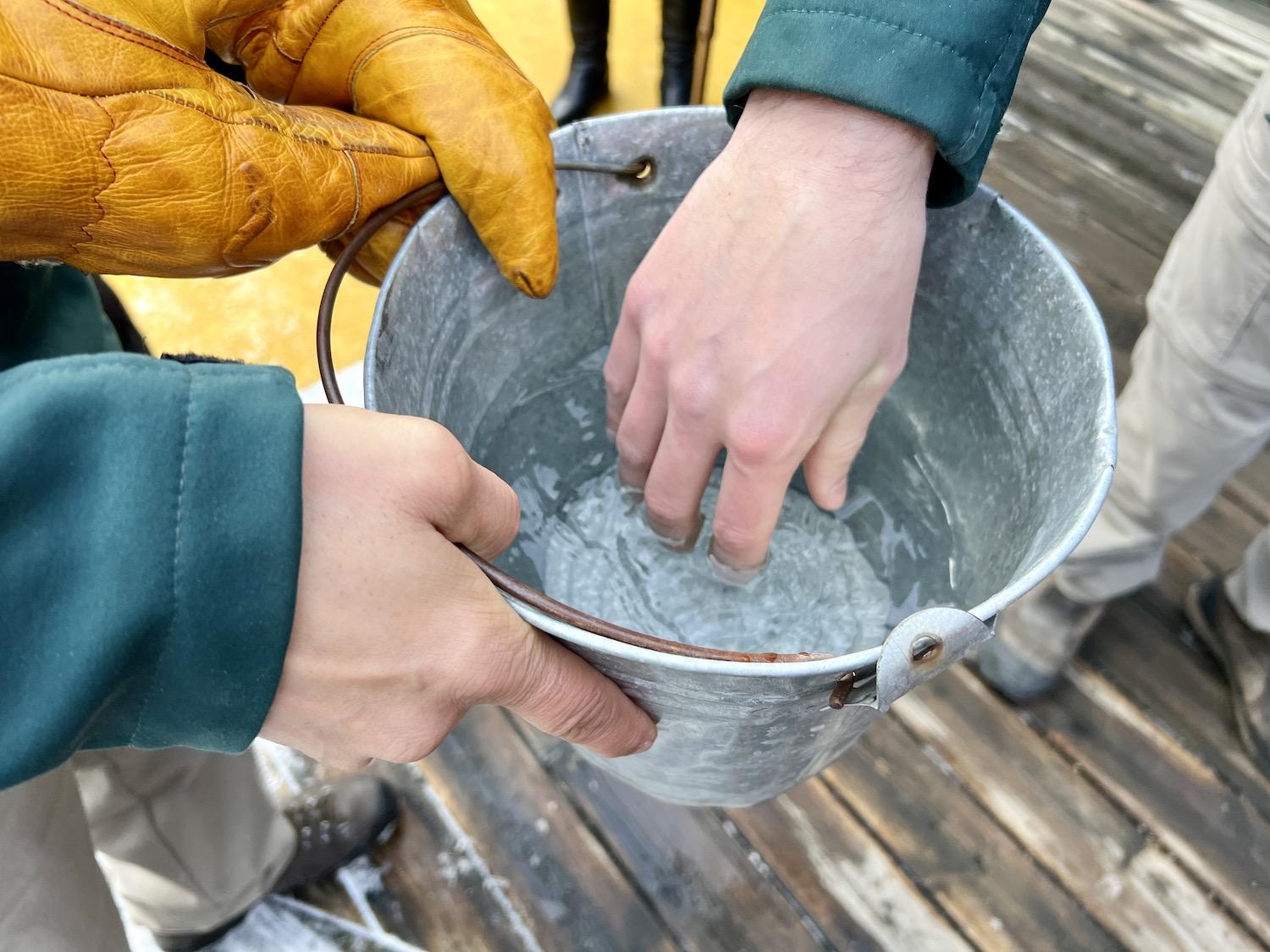
At the end of a public tour, Parks Canada will scoop out some thermal water for people to dip their hands in without endangering rare aquatic snails. The water is then discarded/Jennifer Bain
“What I can do is go grab a bucket, and I can remove some of the water and give you the option to touch it,” Athwal says to finish the tour. “One of the reasons we ask people not to touch the water (in the thermal pool) is because in winter we have moisturizer on our hands. Makeup. You can have mosquito spray on there, or sunblock on there, all those things."
Roughly 200,000 visitors come to this national historic site every year — half of them in June, July and August. Imagine if they all stuck their hands in the thermal water.
"Now if you believe in the miracle of the water, I recommend putting both hands in otherwise one hand will be younger than the other,” Athwal jokes, alluding to the era when people made outlandish claims about the healing properties of thermal water.
We gamely dip our hands in the clear, warm water and have a laugh. Then Athwal discards the bucket of water so there's no chance of harming the site's beloved aquatic snails.


